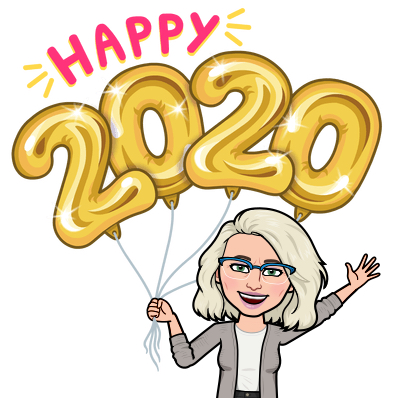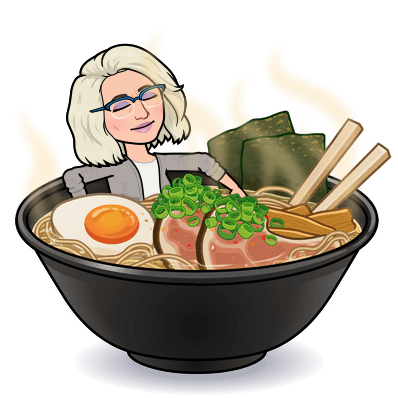We are putting on our annual black-eyed pea soup to ring in the new year, and it’s just in time to send out some blessings to my educator network. My New Year’s wish for all of you is that you are blessed with an excellent, comprehensive curriculum that covers all the applicable standards with incredible depth, while also supplementing with materials that increase engagement and support differentiation, while broadening your students’ world views with those windows and mirrors we all want to provide.
No? Too much to ask?

I tend to be a dreamer, but even I know that the perfect boxed set of curriculum is not a realistic expectation. That cold reality hit me the first day I stepped into my classroom seventeen years ago. I remember the shock I felt when the books and supporting materials were presented to me. They were old. They were boring. And, they were completely unsuitable for the kind of teacher I wanted to be.
At the time, I wasn’t sure if I could make changes, but I sensed that I was not going to be monitored too closely, so I boldly set out to create my own materials one unit at a time. I’m proud of that newbie teacher’s perfect blend of innocence and bravery that set me on the path to create my own lessons.
I was lucky. I had the freedom to create, the support to seek professional development in standards and assessment, and the drive to push through all of the small failures that led to success. At my small, rural school, I was the only ELA teacher for 7th and 9th grades. I had no one to rely on, and no one to please but my students, myself, and the state assessment. I was lucky that I succeeded.
And I never bought a lesson online.
Don’t get me wrong. I hold nothing against those who do. I was just always a broke, single mom with nothing to spare. If 2020 was my first year teaching, I would definitely be more inclined to use the internet to support my curriculum. After all, 2002 was pre-Pinterest and Instagram! These days, I often Google images of materials to get inspiration, and sometimes I take advantage of what colleagues recommend in their blogs or on Twitter or Instagram. I’m never completely satisfied with what I have, so new ideas are always welcome.
As a mentor, I would totally hook up new teachers with great content websites, Facebook groups, and Twitter accounts to follow. But would I recommend popular sites like Teachers Pay Teachers or Share My Lesson? I wouldn’t. And here is why.
The Fordham Institute recently published a study entitled “The Supplemental Curriculum Bazaar: Is What’s Online Any Good?” For the study, a team of researchers and reviewers evaluated the most popular ELA curriculum downloads from three main online providers: Teachers Pay Teachers, Share My Lesson, and ReadWriteThink. The research comes to some conclusions that I found very interesting, and not particularly surprising. What’s online is probably just as flawed as what is in the box. But why?
You should read the full study for details, but I will quickly summarize their nine key findings. Only two were positive. They found that the text quality in the lessons was rated good to excellent and students were often asked to use textual evidence in their answers. Also, the materials were generally well-designed, attractive and free from errors.
On the flip side, they found seven areas of weakness: downloaded materials were rated as “mediocre” or “not worth using,” due to lack of clarity and/or instructional guidance; they were weakly to moderately aligned with the standards with which they claimed alignment; writing, speaking, and listening tasks were of generally poor quality; assessments ranked poorly and often lacked scoring rubrics; the majority of lessons did a poor job of building content knowledge and generally lacked appropriate Depth of Knowledge (DOK); they did an overall poor job supporting the teaching of diverse learners; and, in general, the materials ranked low in potential for engagement and did not reflect the cultural diversity of classrooms.
I have two takeaways after reading this study. First of all, I feel justified in only picking and choosing bits and pieces of content from the internet to supplement what I am already doing. I never rely on downloads to cover the standards I need to teach. I trust that this is how most teachers use the internet, as ingredients for the curriculum soup we are concocting to entice and nourish our students.
My second takeaway comes from the suggestions made by researchers in their discussion of the implications of the study. They see the need for guidance around online sources: curation and support from the providers, as well as school and district leaders stepping in to lend guidance, training, and possibly restrictions around use of downloaded materials.
I agree that the providers should be held accountable to give accurate accounts of standards alignment and better offerings to address cultural diversity. But, my rebel heart is a little concerned about involving the administrators. A teacher’s creativity can only be weakened by taking away the autonomy that comes with being allowed to supplement your lessons at your discretion. We trained for this, after all.
It’s a puzzle, really. Some teachers will want the guidance, the curation, and even the strict parameters. They will thrive with that support, and their students will receive an appropriate, standards-based education.
But, we rebels? We need to search that crazy, mixed-up marketplace for ideas, find it lacking, take what bits we like, and create something better. That is how we thrive. And our students will be all the better for it, as well.
So, what I really wish for you is this:
Fall in love with what you teach. If the curriculum you have is what you love, so be it. If you need to spice it up, go for it. Whatever you do, find lessons that light you up and bring joy to your classroom AND cover the appropriate standards, offering activities that encourage your students to think deeply and write passionately.
What works for you? Please share your ideas and resources for creating your own delicious curriculum soup.

My whole career has been curriculum by hunter/gatherer method. A couple of the literature classes I have taught had an anthology textbook, but I don’t see that as curriculum. In my present role, most of the classes I teach I have to design from the ground up…the best scenario is having a book and the list of standards (I fill in the rest), but in many cases, all I have is the name of the class… everything else is up to me. There are definite pros and cons to this.
I too read the Fordham report with interest, partly because I have a few (very few) items on sale with Teachers Pay Teachers.
Like you, I found that the curriculum I was given didn’t meet all my needs, even though my district does a good job of supporting highly capable instructional with appropriate materials. Still, there are gaps. For instance, I found I had no materials to teach Greek and Latin roots. I started building my own curriculum to teach those roots long before the sites mentioned had gained traction.
In the same way I found a more creative way to introduce place value and decimal computation to my students, a method that worked well from one year to the next, from one set of students to the next.
When I taught ancient cultures at the middle school, I had a comprehensive textbook, but it didn’t quite jibe with the state requirement to focus on the “gifts” our modern society gained from each of those cultures. So I wrote supplemental materials to expand on the district-adopted text and directly address Washington’s Grade Level Expectations.
After I tested out the materials in my classroom, I shared them with other teachers in my district. I was so pleased to see other teachers successfully use the things I had developed. (And, of course, if they didn’t understand the teacher directions that I had written, they would come ask for clarification, which gave me the opportunity to rewrite.)
Eventually, I started sharing to a wider audience at conferences and finally at Teachers Pay Teachers, which makes the pieces available to an even wider audience.
If I decide to sell anything else, I will definitely keep the main criticisms from the study in mind. But as I read the report, I had a criticism of my own. I think they needed to keep in mind author’s purpose. If the writer designs materials to be used as a supplement for broader curriculum, for example, then designing additional assessments or rubrics would be superfluous.
Good point, Jan. I hope no one is out there relying 100% on these sites to help them reach all the standards and engage their students. These have always been meant to add to and not replace what teachers have. Still, it is interesting to read the study, particularly the teacher interviews they conducted. It definitely broadened my view. And now Amazon is coming out with a site for curriculum supplements! It just gets bigger and broader all the time.